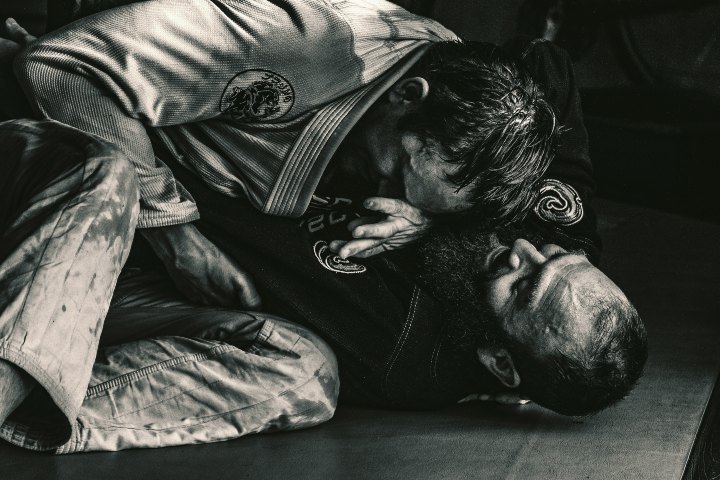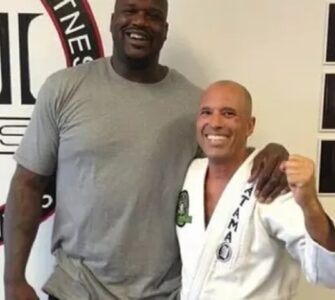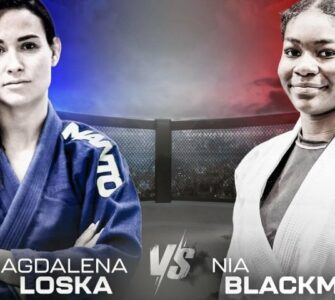Description: History of martial arts and its development. What techniques are used in jiu-jitsu, their changes over the centuries. Where this martial art is applied, its future in the modern world.
History of Brazilian jiu-jitsu
Before you find out who founded BJJ, this art has ancient roots. Brazilian jiu-jitsu is a martial art that originated in Japan. It was created during the feudal era specifically for close combat warriors and is still being refined today. This system was created by many generations of masters for close combat and having passed through the centuries it is now considered a system unrivaled. The root BJJ lineage belongs to the Gracie family. There are many legends and tales about the creation of jiu-jitsu and the masters of this martial art. The first mention of jiu-jitsu is considered by many authors and historians to be the battle described in the early 8th century in the “Book of Ancient Things” between the two Shinto deities.
The history of BJJ describes many cases demonstrating the effectiveness of jiu-jitsu techniques performed by masters. It is known that almost all schools of martial arts had in their arsenal technical actions related to unarmed combat.
There were a great number of such schools because, in the training of samurai, the art of sword wielding was given paramount attention. In addition, almost all schools of this kind offered a whole arsenal of technical actions with other weapons, including “non-standard” forms. When using weapons, flexibility, agility, and strength were of paramount importance. Therefore, the ability to use these qualities was considered a separate art. Subsequently, training in the mastery of one’s body led to the popularization of Brazilian jiu jitsu techniques as a separate martial art, which in turn began to include techniques of fighting with weapons.
Counting how many techniques in BJJ is difficult. Traditional jiu-jitsu schools made extensive use of throws, painful and choking holds, and striking techniques. Strikes were applied to biologically active points, nerve endings, and joints with the ends or phalanges of the fingers, different parts of the palm, elbow, knee, and foot.
A famous case of the application of striking technique in classical jiu-jitsu is the duel of the founder of Tenshin BJJ school master Iso Mataemon with almost a hundred opponents at a time, described in historical chronicles. It took place in Omi province in the first half of the 19th century. Iso Mataemon, with the help of a single student, took down over 40 men with his bare hands and dispersed the rest. It is believed that in this fight the master experienced a mystical insight and realized the principles of effective use of atemi, a striking technique for hitting vulnerable points.
The Future of BJJ
The evolution BJJ is dynamic every day. Many famous athletes apply the techniques of this martial art in their fights. The younger generation who watch athletes competing in UFC, PFL, Bellator, also dream of achieving high success in sports, and sign up for Brazilian jiu-jitsu training.
Many bettors, who follow famous athletes and make bets, predict the appearance of separate BJJ tournaments. The martial art BJJ is becoming popular and will appear on Tips.gg, where everyone can conveniently look at the actual data. On this platform, users will be able to conveniently view the schedule of upcoming fights, tables with the results of athletes, and make betting predictions.
The Tips.gg platform works around the clock, and users will be able to access the site at any time and see the latest information. The official site opens on desktop and mobile devices.
More often videos with effective jiu jitsu techniques appear on the Internet, and people start to want to master these capabilities and apply them in sports. This contributes to the constant popularization of sports in the whole world.
Changing jiu jitsu techniques
In the wartime era, techniques from the martial art were intended to quickly neutralize an opponent. After World War II, for competitive practice, jiu-jitsu schools developed a special section for less dangerous throws. The actual training program also includes pain and choking techniques, pressure or striking points, and herbal resuscitation techniques to treat the effects of pressure points and other injuries.
Jiu-jitsu is one of the most effective schools of real self-defense. Along with a large number of combat techniques aimed mainly at immobilizing the enemy by painful impact on joints or nerve centers, this school includes a section of shiatsu, – point massage applied in accordance with the flow of internal energy along strictly localized meridians. A thorough knowledge of biologically active points and anatomy included in the official certification program has made this school of martial arts one of the most progressive and popular, both in Japan and other countries. Nowadays, evolution jiu jitsu passes in three main directions:
- in the ancient, unchanged form;
- in the form of transformed schools that nevertheless retained the classical methods and characteristics;
- in the form of modern, highly modified styles. It is now difficult to determine which version of the origin of jiu-jitsu is the true one. For the latest up-to-date changes to the rules of the sport discipline, please visit https://bjjee.com.
This martial art, which in dozens of variations has come down to us from ancient times and has been tested in thousands of battles, continues to live and evolve in accordance with the changes taking place around. It while retaining its roots and drawing on more than a thousand years of experience. Since the real warriors, who were samurai, needed absolutely effective and maximally practical fighting techniques, jiu-jitsu crystallized into a perfect martial art. The techniques are now in service of many special services in different countries of the world.





















